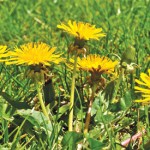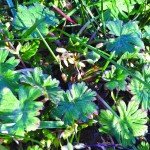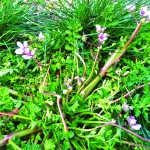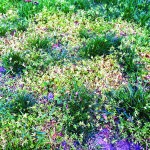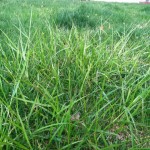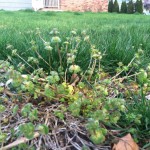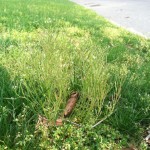Lawn experts: Unusual amount of weeds this season due to mild winter
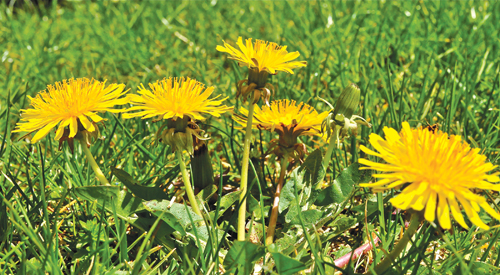
As you roll out the lawn mower this weekend, don’t be surprised if the weeds encroaching on the Kentucky blue grass or fescue seem more abundant than in years past.
Most winter annual weeds, such as doveweed, redstem filaree and chickweed, are typically suppressed by cold weather. Due to this past mild winter, however, many weeds were nurtured through the season and are expected to come out in full force this spring.
Lawn experts say that because the winter of 2010-11 was harsh, with several feet of snow and frigid temperatures, many lawns weren’t plagued with certain weeds that are already popping up this spring.
Dr. Andy Senesac, a weed science specialist at Cornell Cooperative Extension of Suffolk County’s Long Island Horticultural Research and Extension Center in Riverhead, said he’s seeing an unusual amount of weeds.
“Last year was the first time I’ve ever noticed less crabgrass because of that crazy winter,” Dr. Senesac said. “But with this mild winter, I’m expecting more this year. We are going to see a worse year for weeds.”
Lawrence Kaiser, owner of Kaiser Maintenance in Jamesport, agreed that more weeds will pepper lawns this year and suggests homeowners use a holistic approach to managing their turf.
“A balanced fertilization program will provide a thick turf which in turn out-competes the weeds for space,” Mr. Kaiser said. “If you are unsure what fertilization requirements are needed, a simple soil test taken to Cornell Cooperative Extension or the Long Island Cauliflower Association will provide the right course of action.”
Here are suggestions for combatting some pesky winter annual weeds:
• Dandelions are arguably the most common and obvious weeds to pop up each spring. They’re hard to eliminate because the seeds are numerous and will settle quickly into any opening in a lawn. Pulling them out is challenging. The plant sends down a taproot up to 10 inches deep that breaks off easily — and the weed will regenerate if even a small portion remains.
Spraying with vinegar offers an organic alternative to garden variety herbicides such as Roundup or Weed-B-Gon, But since the vinegar used in cooking is low in acetic acid, which is what kills the weed, one option is to boil it down to increase its strength.
Vinegar and Roundup will kill grass as well as weeds so they must be sprayed on the foliage. Weed-B-Gon, however, targets only broadleaf weeds.
• Doveweed starts growing around mid-September. In the spring, it should disappear after a few mowings. To rid your lawn of stubborn doveweed, hand removal is recommended for single plants, herbicide for larger amounts. To deter growth, a pre-emergent herbicide application is suggested in the fall.
• Redstem filaree also begins to grow around mid-September and should also vanish after two or three spring mowings. Redstem filaree may also die back during the heat of the summer. A fall treatment with a standard turf herbicide for broadleaf weed control is the most effective method to deter future growth.
• Chickweed can reproduce throughout the summer months. Selective herbicide treatments for lawns and hand removal combined with a pre-emergent for gardens are suggested. A fall treatment with a standard turf herbicide for broadleaf weed control will also be effective.
• Nut sedge is a hardy perennial weed that’s very difficult to control. Mr. Kaiser said hand weeding is not an option because even a small piece left behind could continue to grow and multiply. Dr. Senesac said it’s possible to remove the weed by hand as long as you’re careful to get out all the roots. Only a few non-selective herbicides can eliminate this weed, so check the label.
• Purple dead nettle is another winter annual that gets going about mid-September. This weed should disappear after a few mows in the spring. To rid your lawn of stubborn specimens, apply a selective herbicide treatment with a balanced fertilization program. To deter growth, a fall treatment with a standard turf herbicide for broadleaf weed control is recommended.
• Hairy bittercress is a winter annual that can actually be spread by mowing, so it’s better to hand pull it before mowing and carefully put it in a bag so the seeds won’t spread to nearby areas. Spring pre-emergent application for lawns and gardens is suggested. When heavy population exists, a pre-emergent is suggested in the fall.



